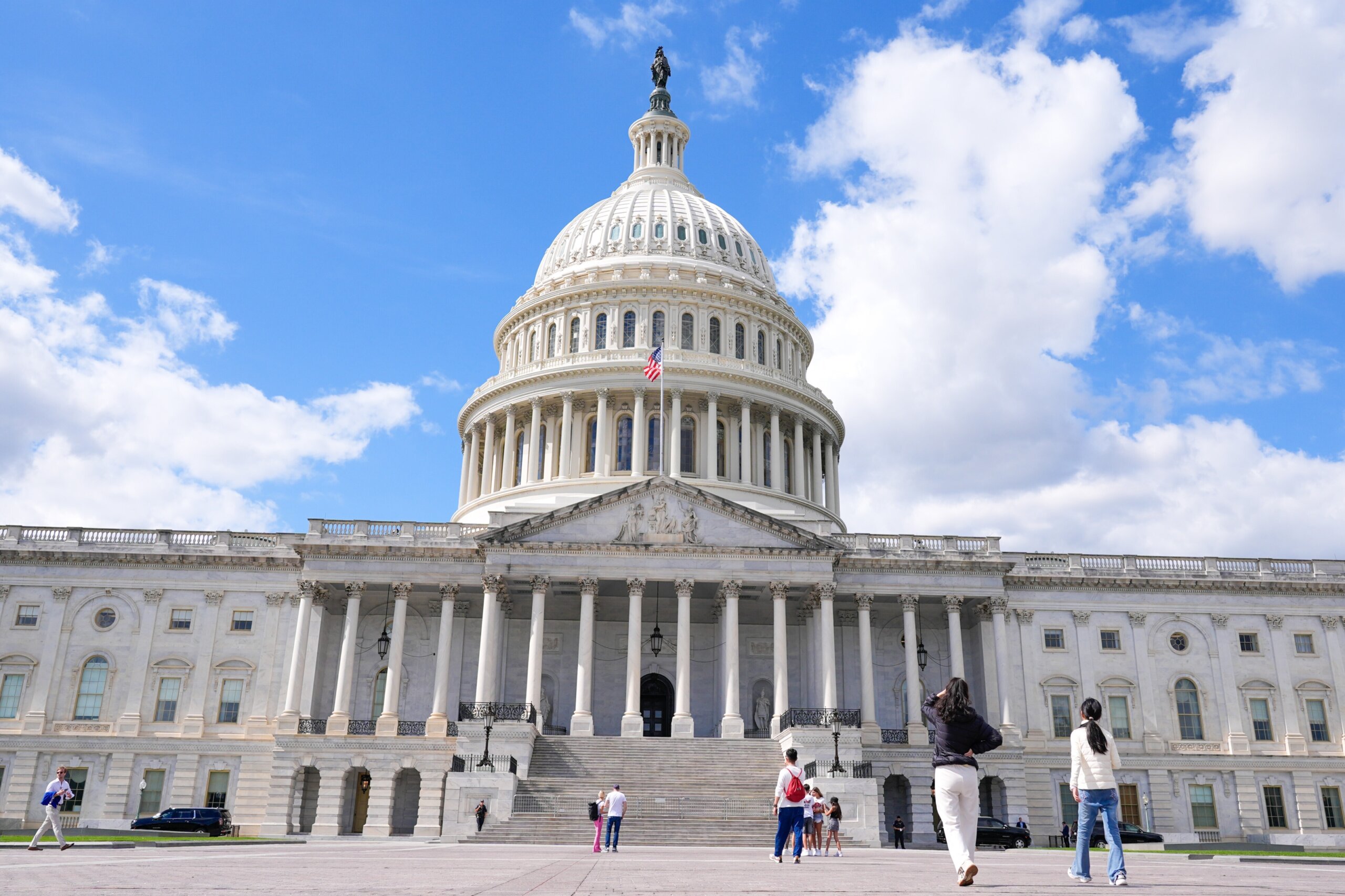
Explore how U.S. cities and counties are preparing for a potential federal shutdown — learn about grant delays, infrastructure slowdowns, and real examples of how local governments keep vital services running.
U.S. local governments are on edge as Congress nears another federal shutdown. With grants, reimbursements, and interagency programs at risk, cities and counties brace for disruptions in infrastructure, safety, and public health funding. Some are already drawing from reserves, revising budgets, and delaying projects to shield residents from the fallout.
When Washington Sneezes, Local Governments Catch a Cold
A federal government shutdown may seem like a faraway political standoff, but for America’s local governments — the counties, cities, and towns that deliver daily services — it’s an immediate financial and operational crisis.
While Congress debates budgets, local agencies are left scrambling to fill funding gaps, delay essential projects, and explain to residents why everything from housing programs to police training may be on hold.
This article unpacks what a federal shutdown means, how local governments are bracing for impact, and what steps leaders and communities can take to weather the storm — all supported by real examples, credible data, and practical insights.
What Exactly Is a Federal Government Shutdown?
A federal shutdown occurs when Congress fails to pass funding legislation (appropriations bills) or a short-term continuing resolution (CR). Without legal authorization to spend, federal agencies are forced to halt or curtail operations.
According to the Bipartisan Policy Center, federal employees are then divided into two categories:
- “Excepted” staff who must continue working (like military or air traffic controllers)
- “Furloughed” staff who are placed on unpaid leave
What Still Runs During a Shutdown?
- Social Security, Medicare, and Medicaid: These continue since they’re funded through trust funds, not annual appropriations.
- Military and essential law enforcement: Personnel work, often without immediate pay, until Congress restores funding.
- Air travel, border security, and prisons: Largely operational but strained.
- Discretionary programs and grants: Most paused or delayed.
Since 1980, the U.S. has faced 14 shutdowns, the longest lasting 35 days in 2018–19, which cost the economy $11 billion, with $3 billion in permanent losses. (CBS News)
How Does a Federal Shutdown Hit Local Governments?
While Washington deals with politics, America’s cities and counties handle the fallout. Local governments rely on thousands of federal grants and reimbursements — the lifeblood for infrastructure, housing, health, and safety initiatives.
When those funds freeze, operations stall. Below is how shutdowns translate to real-world local disruption.
1. Grant Delays and Cancellations
Federal grant funding fuels countless local programs — from road repairs to public safety. When shutdowns occur, these programs grind to a halt.
- Grant approvals are frozen: Agencies cannot issue new awards or reimburse expenditures.
- Deadlines expire: Some competitive grant windows close mid-shutdown, disqualifying applicants.
- Smaller municipalities are hit hardest: They lack reserve cash flow to bridge delays.
Real Example:
A rural county in Iowa planned a flood-resilience project using a FEMA grant. When federal reviews halted during a shutdown, reimbursements paused for months — forcing local officials to dip into reserves.
2. Public Safety and Emergency Services
Local safety programs often rely on federal money through initiatives like COPS, FEMA Assistance to Firefighters, or Byrne Justice grants. When those stop, community risk rises.
- Police modernization slows — body cameras, training, and community policing grants are delayed.
- Fire department upgrades stall — older gear stays in service longer.
- Emergency management agencies lose federal coordination support from FEMA.
Example:
A Texas city awaiting FEMA approval for rescue vehicle procurement was left using outdated models after a funding halt. Their mayor said, “We can’t afford delays when lives depend on equipment reliability.”
3. Infrastructure and Public Works Projects
America’s infrastructure revival depends heavily on federal matching funds under the Bipartisan Infrastructure Law. Shutdowns stall permitting, halt construction, and increase costs.
- Environmental and compliance reviews pause.
- Grant reimbursements for projects under DOT or EPA are suspended.
- Contractors face layoffs or downtime.
Example:
In Missouri, a bridge restoration funded by the Federal Highway Administration was delayed when agency reviews halted. The city incurred extra costs due to material price spikes once funding resumed.
4. Administrative and Staffing Strain
Beyond dollars, shutdowns impose bureaucratic headaches:
- Local finance departments must reforecast budgets mid-year.
- Departments delay payroll increases or equipment purchases.
- HR freezes nonessential hiring.
Example:
A Virginia county’s finance director described spending “three sleepless weeks adjusting projections and juggling vendor payments during the 2019 shutdown.”
This administrative fatigue erodes morale and distracts staff from long-term strategic goals.
5. Social and Health Services Disruption
Community-based programs often receive federal pass-through funding via local governments. During a shutdown, many of these social safety nets weaken.
- SNAP & WIC: May continue briefly but face administrative slowdown.
- Head Start centers: Risk temporary closure if reimbursements stall.
- Public health monitoring: CDC collaboration with local agencies weakens.
Example:
A nonprofit meal program for seniors in Ohio cut delivery routes during a shutdown when federal nutrition funds were delayed. For vulnerable residents, that meant missing essential meals.
How Local Governments Are Preparing: Real Actions Across the Country
Facing repeated budget standoffs, local governments are developing “shutdown playbooks.” Here’s how they’re bracing for impact:
1. Contingency Planning and Shutdown Playbooks
Counties and cities now identify which services are “non-negotiable” — public safety, water, sanitation — and plan tiered service levels.
Checklist includes:
- Which grants and contracts depend on federal funds
- Emergency reserve thresholds
- Communication plans to residents
2. Using Rainy-Day Funds
Many localities are dipping into reserve funds to sustain programs while awaiting reimbursements. Though prudent, it’s not sustainable long-term.
Example:
Phoenix used emergency reserves in 2019 to keep housing voucher programs active when HUD payments were delayed.
3. Reprioritizing or Pausing Projects
Nonessential capital projects — park upgrades, digital transformations, or city beautification — are deferred to conserve cash flow.
4. Renegotiating Contracts
Procurement offices may insert “shutdown clauses” allowing delayed payments or scaled deliveries until federal operations resume.
5. Seeking State and Philanthropic Support
Some cities coordinate with state emergency funds or foundations to fill temporary gaps in social services.
Example:
During the 2018–19 shutdown, New York City collaborated with local charities to fund temporary food programs for furloughed federal workers.
6. Strengthening Local Revenue Options
In extreme cases, cities temporarily boost fees — parking, permits, or recreation — or fast-track approved property tax increments to maintain liquidity.

Scenario Planning: What Could Happen
Scenario A: Short-Term Shutdown (1–2 Weeks)
- Minor delays in reimbursements
- Limited operational impact
- Projects resume quickly after reopening
Scenario B: Moderate Shutdown (3–6 Weeks)
- Deferred capital spending
- Staff freezes or shorter workweeks
- Increasing administrative stress
Scenario C: Prolonged Shutdown (6+ Weeks)
- Grant cancellations and debt stress
- Reserve depletion
- Political unrest and community dissatisfaction
Historical Parallel:
The 35-day 2018–19 shutdown forced local transit agencies to postpone maintenance and furlough staff. Its ripple effects persisted for months.
FAQs Americans Are Asking About the Shutdown’s Local Impact
1. Will a federal shutdown stop local trash collection or police patrols?
Not immediately. Local services like sanitation and policing are funded by local budgets. However, grants for special initiatives (e.g., community policing) may pause, delaying upgrades or new programs.
2. What happens to grants my city already received?
Funds already disbursed remain, but further reimbursements may freeze. Expect bureaucratic backlog once the government reopens.
3. Does this affect my city’s firefighters or EMTs?
Local emergency services continue, but federal assistance programs (FEMA reimbursements, equipment grants) may stall, impacting training and modernization.
4. Can cities use reserves to maintain programs?
Yes — many local governments maintain “rainy-day” funds. These can bridge short-term disruptions, but prolonged shutdowns will quickly erode them.
5. Will my Social Security check stop?
No. Social Security and Medicare are considered mandatory spending, continuing regardless of shutdowns. However, field offices may reduce support hours.
6. What about SNAP, WIC, or housing programs?
SNAP may continue temporarily using prior allocations, but WIC and housing programs like Section 8 could see administrative delays.
7. How are infrastructure projects impacted?
DOT, EPA, and HUD-funded projects may pause pending agency sign-offs. Environmental reviews and disbursements are typically frozen.
8. Are local federal offices closed?
Yes, nonessential offices like IRS or passport centers may close. This affects local economies dependent on federal workers.
9. Can shutdowns affect small businesses that contract with government?
Absolutely. Vendors waiting for federal payments face liquidity crunches. Local small businesses providing supplies to federal agencies may suffer delayed revenues.
10. How long can a shutdown last — and what’s the worst case?
Anywhere from a few days to months. The record-long 35-day shutdown cost $11 billion and damaged government credibility. Local governments bore much of that strain.
Key Strategies & Takeaways for Local Leaders
1. Audit Dependency on Federal Funds
Map every local program receiving federal money — from police grants to community health. Knowing exposure allows better prioritization.
2. Maintain Adequate Reserves
Keep 10–15% of annual expenditures in reserve for emergency continuity.
3. Protect Essential Services
Budget frameworks should safeguard utilities, safety, and emergency response even under federal delay.
4. Pre-spend or Accelerate Grant Projects
Draw down approved grant funds before fiscal year deadlines to minimize exposure.
5. Improve Intergovernmental Coordination
Work with state agencies and regional councils to share resources.
6. Communicate Early and Transparently
Let residents and employees know what’s happening and which services may slow.
7. Advocate for Policy Change
Support legislation for “automatic continuing resolutions” — measures that prevent shutdowns altogether.
8. Explore Alternative Funding
Local bonds, state matching programs, or philanthropic partnerships can sustain programs temporarily.
9. Regularly Test the Shutdown Playbook
Simulated exercises ensure that when funding halts, everyone knows their role.
10. Stay Updated with Federal Guidance
Follow OMB, White House, and agency contingency plans — they update protocols during shutdowns.
Outlook: What Comes Next?
The immediate future depends on Congress — but local governments must prepare as though a shutdown is inevitable. Each round of political brinkmanship chips away at stability, testing local resilience.
Key watchpoints include:
- Length of the shutdown: Short-term pauses are manageable; long-term shutdowns risk deep service cuts.
- Political polarization: Partisan funding freezes can unfairly penalize certain jurisdictions.
- Potential reforms: Growing bipartisan interest in legislation to automatically fund essential government operations may ease future pain.
Conclusion: Strength Through Preparedness
Federal shutdowns remind us that even the most local concerns — clean water, safe streets, reliable emergency response — are tied to Washington’s decisions.
For mayors, county executives, and local finance officers, the message is clear:
anticipate disruption, build fiscal resilience, and communicate openly with your community.
Because when federal funding stops, local governments don’t just brace for impact — they carry the load.
